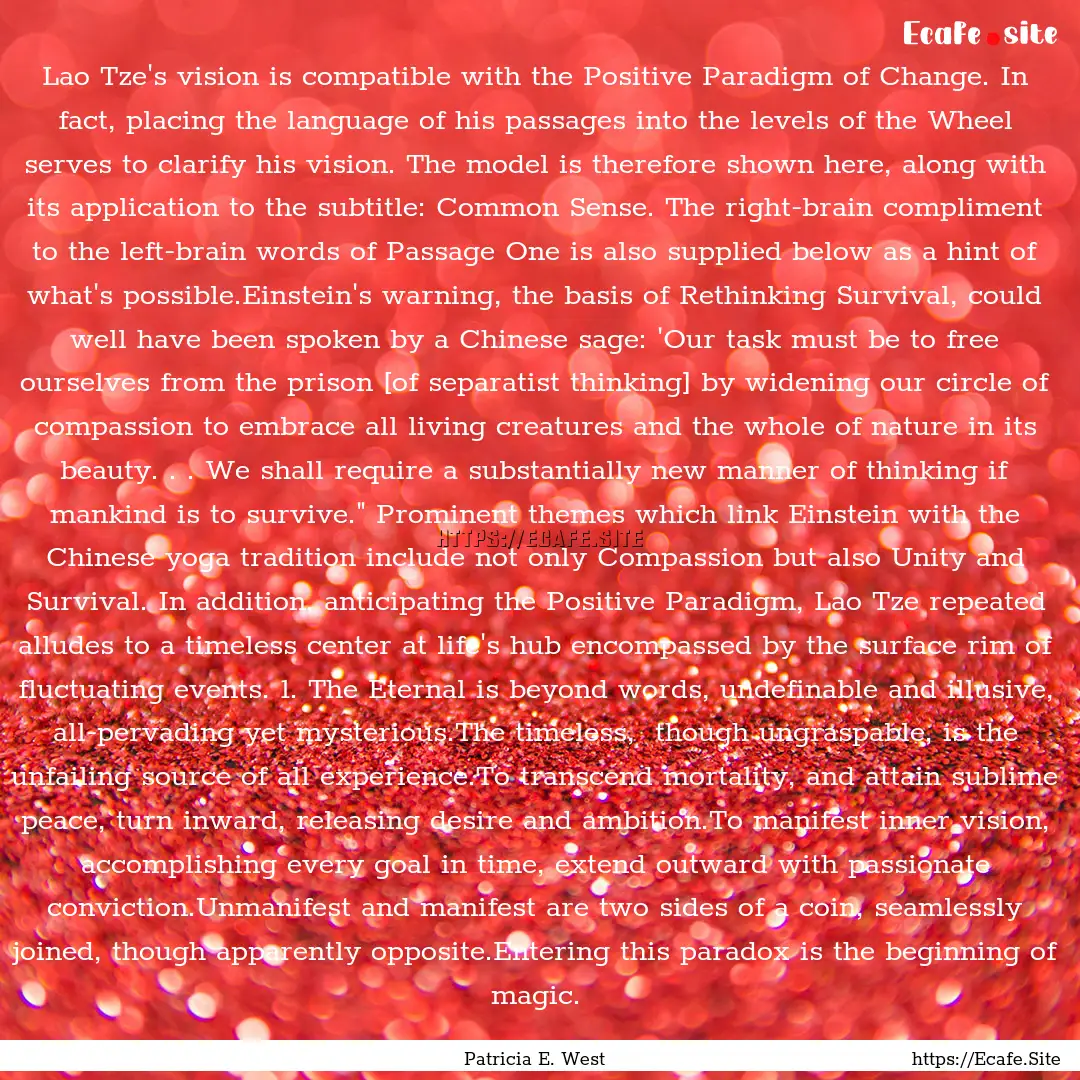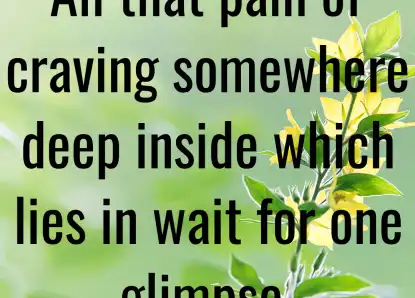
Report, if you have a problem with this page“ Lao Tze's vision is compatible with the Positive Paradigm of Change. In fact, placing the language of his passages into the levels of the Wheel serves to clarify his vision. The model is therefore shown here, along with its application to the subtitle: Common Sense. The right-brain compliment to the left-brain words of Passage One is also supplied below as a hint of what's possible.Einstein's warning, the basis of Rethinking Survival, could well have been spoken by a Chinese sage: 'Our task must be to free ourselves from the prison [of separatist thinking] by widening our circle of compassion to embrace all living creatures and the whole of nature in its beauty. . . We shall require a substantially new manner of thinking if mankind is to survive." Prominent themes which link Einstein with the Chinese yoga tradition include not only Compassion but also Unity and Survival. In addition, anticipating the Positive Paradigm, Lao Tze repeated alludes to a timeless center at life's hub encompassed by the surface rim of fluctuating events. 1. The Eternal is beyond words, undefinable and illusive, all-pervading yet mysterious.The timeless, though ungraspable, is the unfailing source of all experience.To transcend mortality, and attain sublime peace, turn inward, releasing desire and ambition.To manifest inner vision, accomplishing every goal in time, extend outward with passionate conviction.Unmanifest and manifest are two sides of a coin, seamlessly joined, though apparently opposite.Entering this paradox is the beginning of magic. ”

Patricia E. West
From : Two Sides of a Coin: Lao Tze's Common Sense Way of Change



